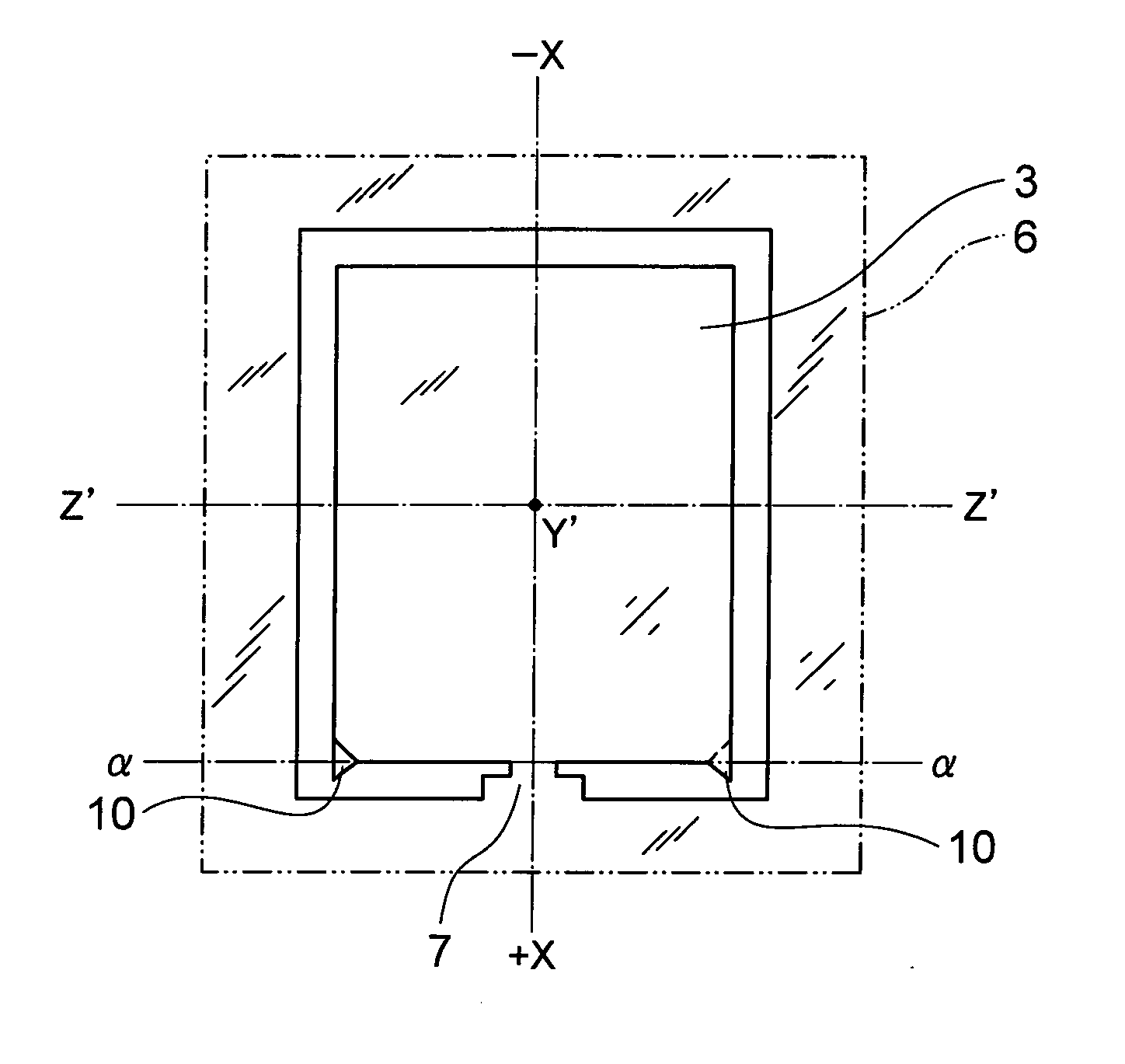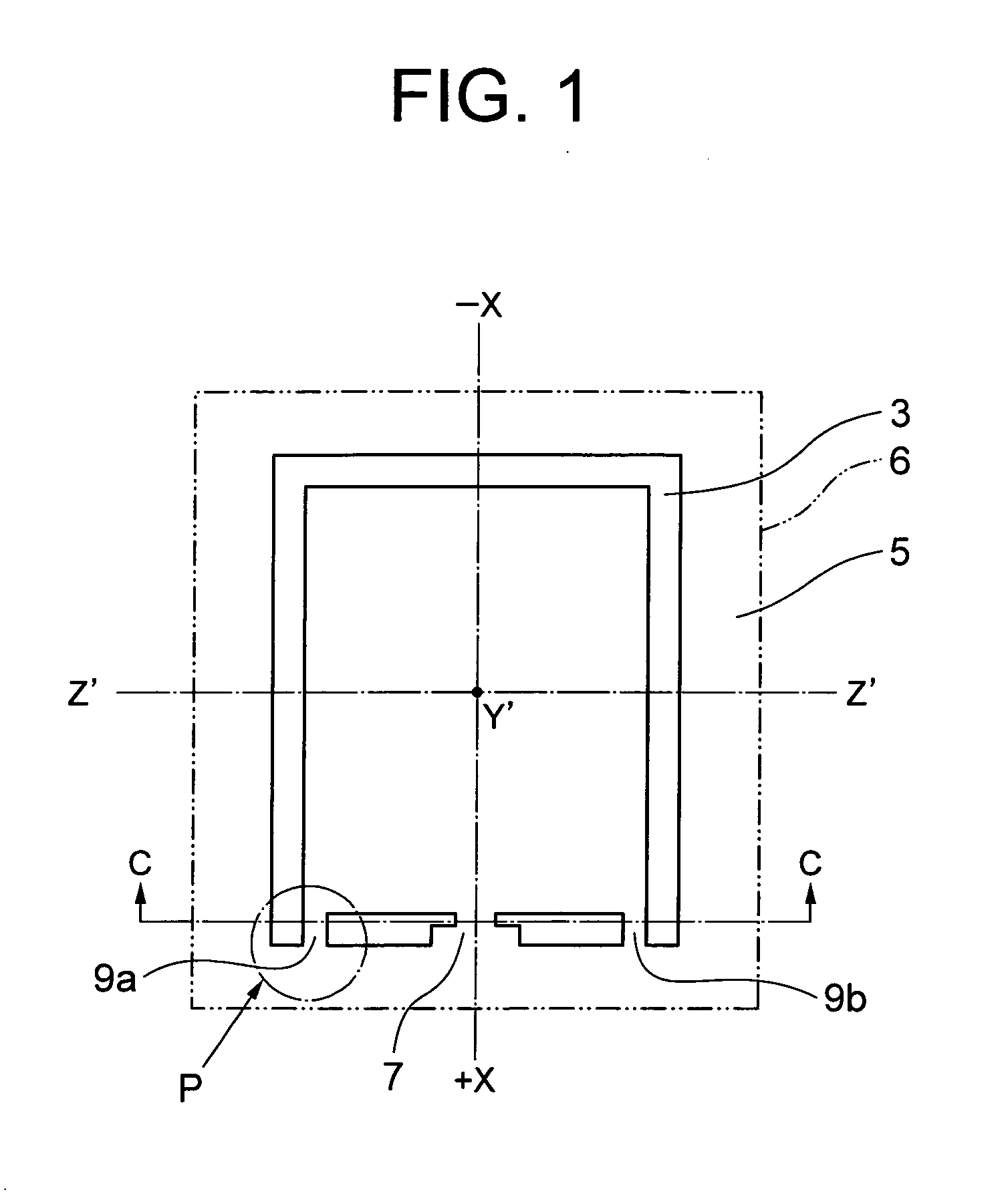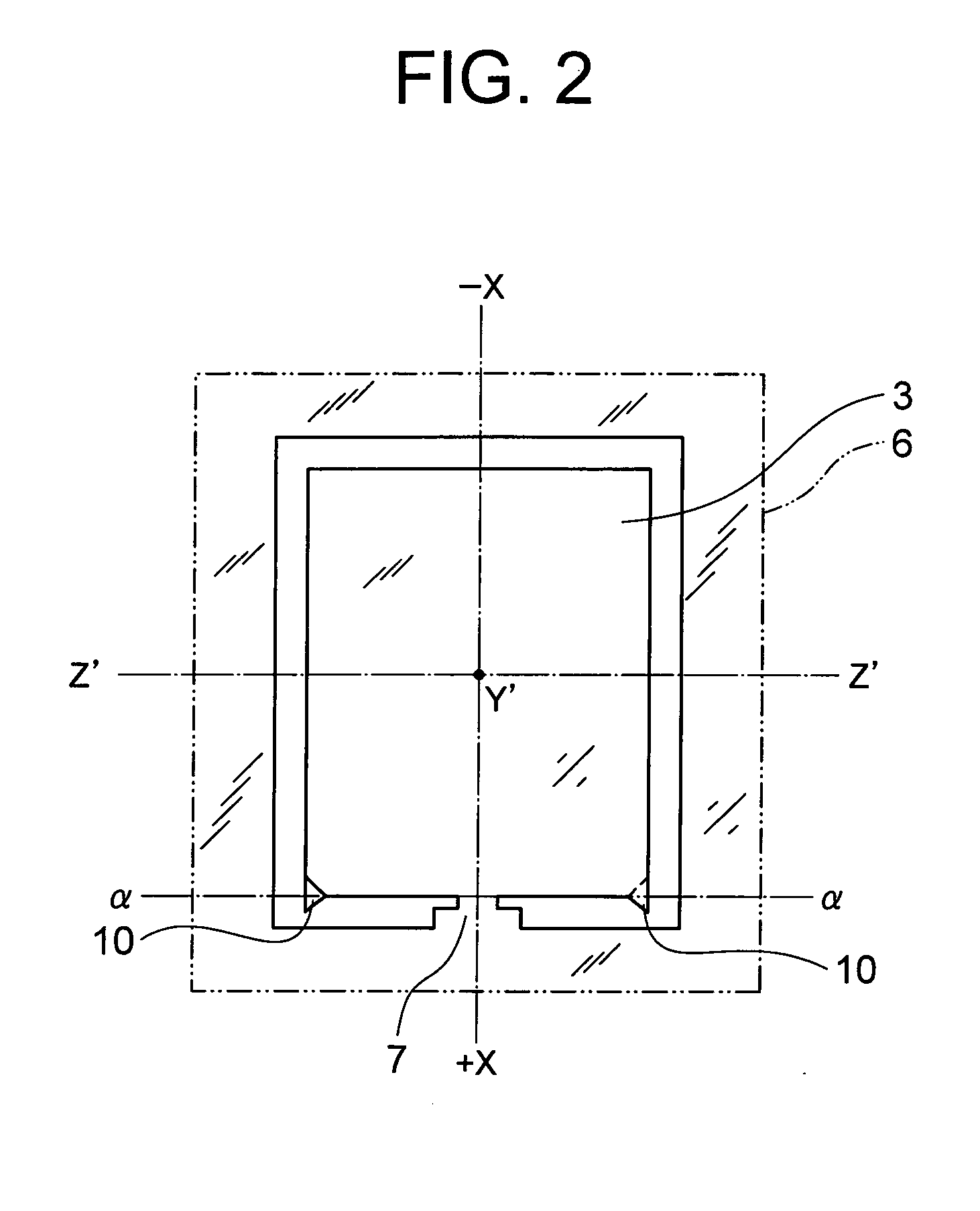Ultrasonic probe
a technology of ultrasonic probes and probes, which is applied in the field of ultrasonic probes, can solve the problems of increasing the crystal impedance (ci) and degrading the resonating characteristic, and achieve the effect of small probability of crystal element chipping
- Summary
- Abstract
- Description
- Claims
- Application Information
AI Technical Summary
Benefits of technology
Problems solved by technology
Method used
Image
Examples
Embodiment Construction
[0036]Hereunder, one embodiment of a crystal resonator manufacturing method of the present invention is described, with reference to FIG. 1 to FIG. 4. The same reference numbers are given to portions the same as those in the aforementioned conventional example, and descriptions thereof are simplified or omitted.
[0037]As mentioned above, a crystal resonator (crystal element) is an AT-cut element in which the principle surface thereof is orthogonal to the Y′-axis of the coordinate axis
[0038](XY′Z′) rotated about the X-axis of the crystal axis (XYZ). Moreover a large number of crystal elements 3 with a processed outer shape including a lead-out electrode and exciting electrode, are obtained by conducting photoetching on a crystal wafer 4 (refer to FIG. 6 to FIG. 8). Having conducted the outer-shape processing of the crystal element, an exciting electrode and lead-out electrode (not shown in the drawings) are formed on the principle surface of the crystal element by means of photoetchin...
PUM
| Property | Measurement | Unit |
|---|---|---|
| frequency | aaaaa | aaaaa |
| width | aaaaa | aaaaa |
| anisotropy | aaaaa | aaaaa |
Abstract
Description
Claims
Application Information
 Login to View More
Login to View More - R&D
- Intellectual Property
- Life Sciences
- Materials
- Tech Scout
- Unparalleled Data Quality
- Higher Quality Content
- 60% Fewer Hallucinations
Browse by: Latest US Patents, China's latest patents, Technical Efficacy Thesaurus, Application Domain, Technology Topic, Popular Technical Reports.
© 2025 PatSnap. All rights reserved.Legal|Privacy policy|Modern Slavery Act Transparency Statement|Sitemap|About US| Contact US: help@patsnap.com



